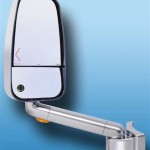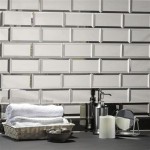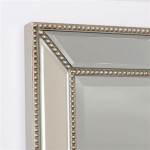What is Mirror Tint?
Mirror tint refers to a type of window film applied to glass surfaces, creating a highly reflective, mirror-like appearance. It significantly reduces the amount of light and heat passing through the glass while also providing increased privacy. While offering numerous benefits, mirror tint also comes with certain limitations and regulations that vary by jurisdiction.
How Mirror Tint Works
Mirror tint achieves its reflective quality through a thin layer of metallic particles embedded within the film. These metallic particles, often silver, aluminum, or a combination of metals, reflect a significant portion of incoming light and solar radiation. The degree of reflectivity, and therefore the intensity of the mirror effect, depends on the specific metallic composition and the thickness of the film.
Benefits of Mirror Tint
One primary advantage of mirror tint is its superior heat rejection properties. By reflecting solar radiation, it helps keep interiors cooler, reducing the need for excessive air conditioning and potentially lowering energy costs. This heat reduction also protects interior furnishings from fading and damage caused by prolonged sun exposure.
Enhanced privacy is another key benefit. The reflective surface makes it difficult for outsiders to see through the glass, offering a greater degree of seclusion for occupants. This privacy feature is particularly valuable for homes and businesses located in densely populated areas or facing busy streets.
Mirror tint also provides increased glare reduction. By reflecting a significant portion of incoming light, it minimizes disruptive glare from the sun or headlights, improving visibility and comfort for those inside.
Furthermore, mirror tint can offer a degree of added security. The strong, durable film can help hold shattered glass together in the event of an accident or attempted break-in, providing an additional layer of protection.
Aesthetically, mirror tint can enhance the appearance of a building. The reflective surface can create a sleek, modern look, adding to the overall visual appeal.
Types of Mirror Tint
Several types of mirror tint are available, each offering different levels of reflectivity and performance. Some common types include silver reflective films, offering a classic mirror finish, and colored reflective films, which combine reflectivity with a specific color tint.
Dual-reflective films offer different reflectivity on the exterior and interior surfaces, allowing for optimized performance in terms of both privacy and light transmission. These films are often designed to maximize heat rejection while maintaining a less reflective appearance from the inside.
Regulations and Legal Considerations
The legality of mirror tint varies significantly depending on local laws and regulations. Many jurisdictions restrict the use of highly reflective films on vehicles due to safety concerns related to reduced visibility for drivers, particularly at night. It's crucial to research and comply with local regulations before applying mirror tint to any vehicle.
Similar restrictions may apply to buildings in certain areas. Building codes often specify permissible levels of light transmission and reflectivity for windows, particularly in commercial spaces. Before installing mirror tint on a building, it's essential to verify compliance with applicable building codes and regulations.
Installation and Maintenance
Professional installation is generally recommended for mirror tint to ensure proper application and avoid imperfections like bubbles or wrinkles. A skilled installer can also advise on the most suitable film type and ensure compliance with local regulations.
Maintaining mirror tint is relatively simple. Regular cleaning with a mild soap and water solution is typically sufficient to keep the film looking its best. Abrasive cleaners and harsh chemicals should be avoided as they can damage the film's reflective surface.
Considerations Before Choosing Mirror Tint
While offering numerous advantages, mirror tint is not always the ideal solution for every application. The highly reflective surface can sometimes create excessive glare for neighboring buildings or properties. It's important to consider the potential impact on surrounding areas before opting for mirror tint.
Furthermore, while offering daytime privacy, mirror tint can have the opposite effect at night. When interior lights are on and the outside is dark, the reflective surface becomes transparent, allowing outsiders to see inside. This factor should be carefully considered, especially for residential applications.
The reduced light transmission inherent in mirror tint can also lead to lower interior light levels, potentially increasing the need for artificial lighting during the day. This factor should be weighed against the benefits of heat reduction and privacy when making a decision.

Does One Way Mirror Tint Work After Dark Ap Tinting

Reflective Window Mirror Tinting Sydney

Mirror Window Campbell

Mirror Silver Privacy One Way Pro Window Tinting Sticky Back Tint

Install Mirror Window Tint For Your Car

Should You Get Mirror Tint

Mirror Tint Suntek

Window Tint Maximums Chevy Ss Forum

Top Styles For Mirror Tint Sunglasses

Solar Control Reflective Car Window Mirror Tinted Metallic China And Tint








